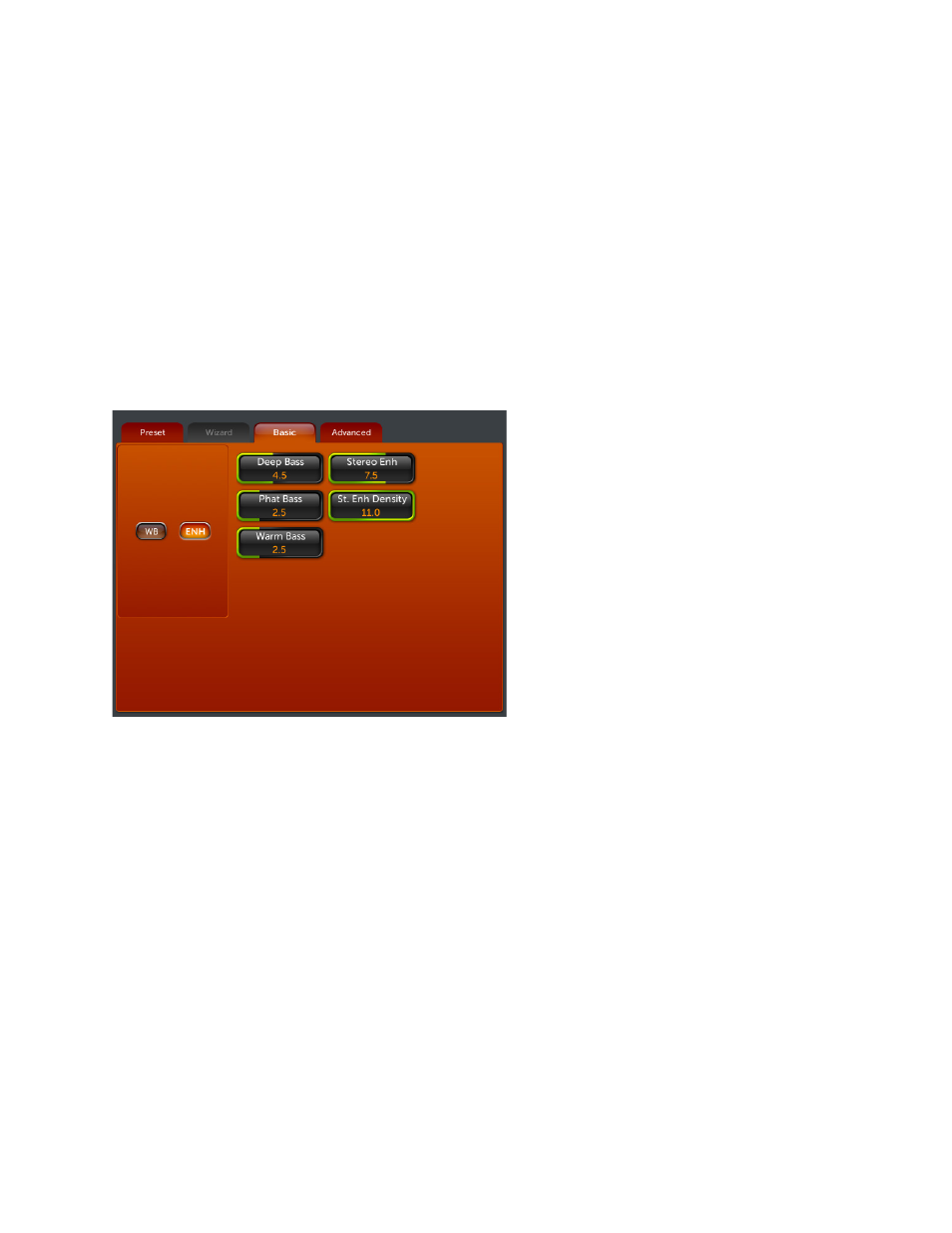Enh (basic tab) – Omnia Audio Omnia.11 User Manual
Page 65

49
Ratio: This variable control adjusts the overall compression ratio of the Wideband AGC. Available settings range
from 2:1 to 10:1. Lower ratios will let more dynamics through to the following multi-band AGC section and are
preferred for most applications. A good starting point for most popular music formats is 4:1 or 5:1. This will provide
very smooth, smart, hand-on-the-pot level control. The 2:1 ratio is very gentle and may be preferable for classical
music or jazz to preserve more of the natural dynamics. Higher ratios (7:1 and above) are useful primarily for talk
programming or anywhere there is a desire to have tighter control over very dynamic program material and/or a
more processed sound. NOTE: Higher ratios can cause the WB AGC to “overreact” on denser program material
such as modern popular music, especially with faster attack times and slower release times, so use with caution.
Keep in mind that there is another 5-Band AGC section that follows, so more gentle control at this stage is normally
preferred.
ENH (Basic Tab)
Touch the ENH (Enhance) submenu button to display the controls for the Omnia.11’s bass and stereo enhancement
functions. There are 5 variable controls located here and 3 more in the Advnaced tab.:
Deep Bass: This controls the amount of deep bass
enhancement. The deep bass range includes kick
drum and low toms as well as low organ pedal
notes, bass synthesizer and the lower notes on the
bass guitar. A setting of “0.0” effectively turns
bass enhancement off. The smart bass enhancer
will add bass to bass-shy material without
“overdoing it” on material that already has enough
bass.
Phat Bass: This control adds additional bass
enhancement that can give your station a “phatter”
sound, especially on radios with small speakers
that lack actual deep bass. This is a brand new Phat
Bass algorithm that fattens things up without
muddiness.
Enhancers Menu (Basic Tab)
Warm Bass: This control helps compensate for program material that is naturally lacking in upper-bass fullness.
Like the other bass enhance controls above, this one is “smart” as well, but be judicious about applying too much. A
little can give nice, subtle warmth to voices and other program material that may otherwise sound too thin.
Important Note: These three controls are not simple equalizers. They are program-dependant so are able to
enhance bass-shy material without over-enhancing program material that already has enough bass. If you find that
your program material is still bass-shy even at high settings, go into the Advanced tab and turn up the Bass Growl
control. (see the next page for more information about Bass Growl).
Stereo Enh (Stereo Enhance): This controls how much of the Omnia’s built-in stereo enhancement effect is
applied. The Omnia.11 contains an intelligent DSP-based stereo enhancement tool that enhances the stereo sound
field without causing unnatural “hole in the middle” imaging or exaggerated multipath. Program audio previously
lacking in stereo width will have noticeably increased ambiance and dimension when the Stereo Enh is active.
Vocals will stay up-front and the sonic details of musical instruments will be heard with an apparent slight loudness
increase.
The Stereo Enh control has a range of “0.0” (OFF) to 11 and the amount of dynamic width expansion can be
observed on the rightmost vertical bargraph marked “ST” in the Meter Area. The system should be initially
auditioned using light amounts of stereo enhancement, with an initial setting of 4 to 6 recommended as a starting